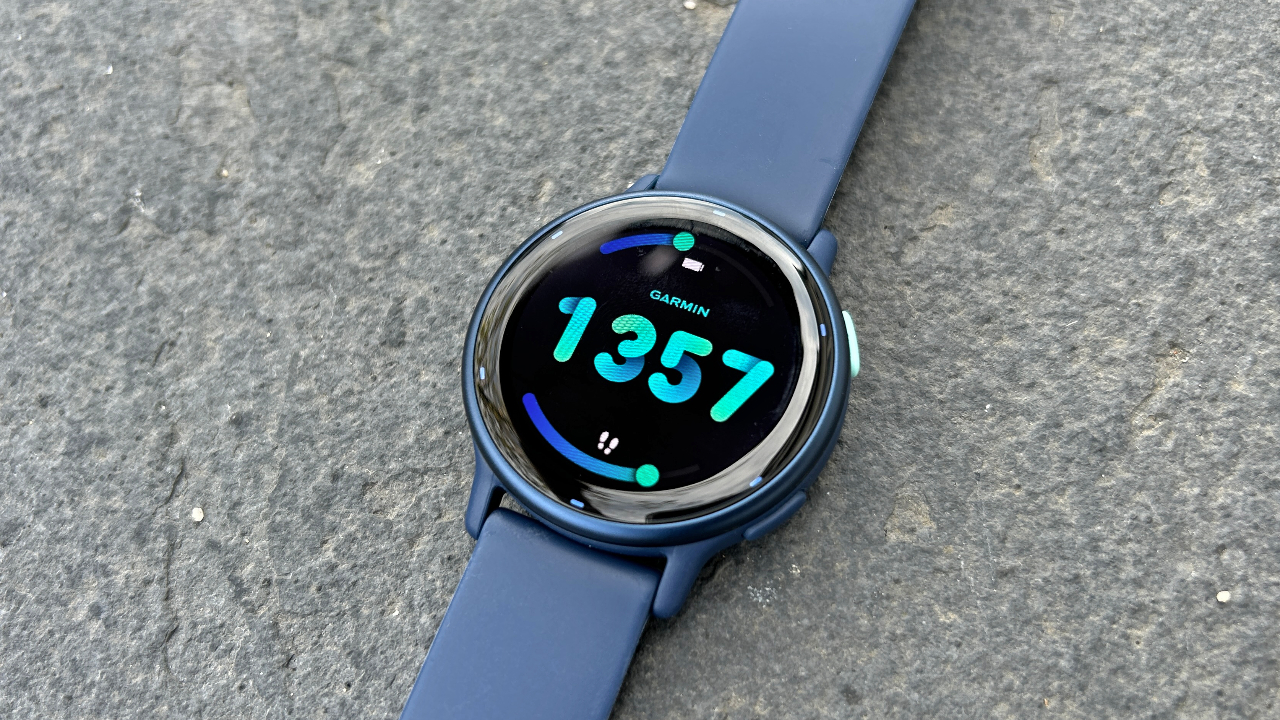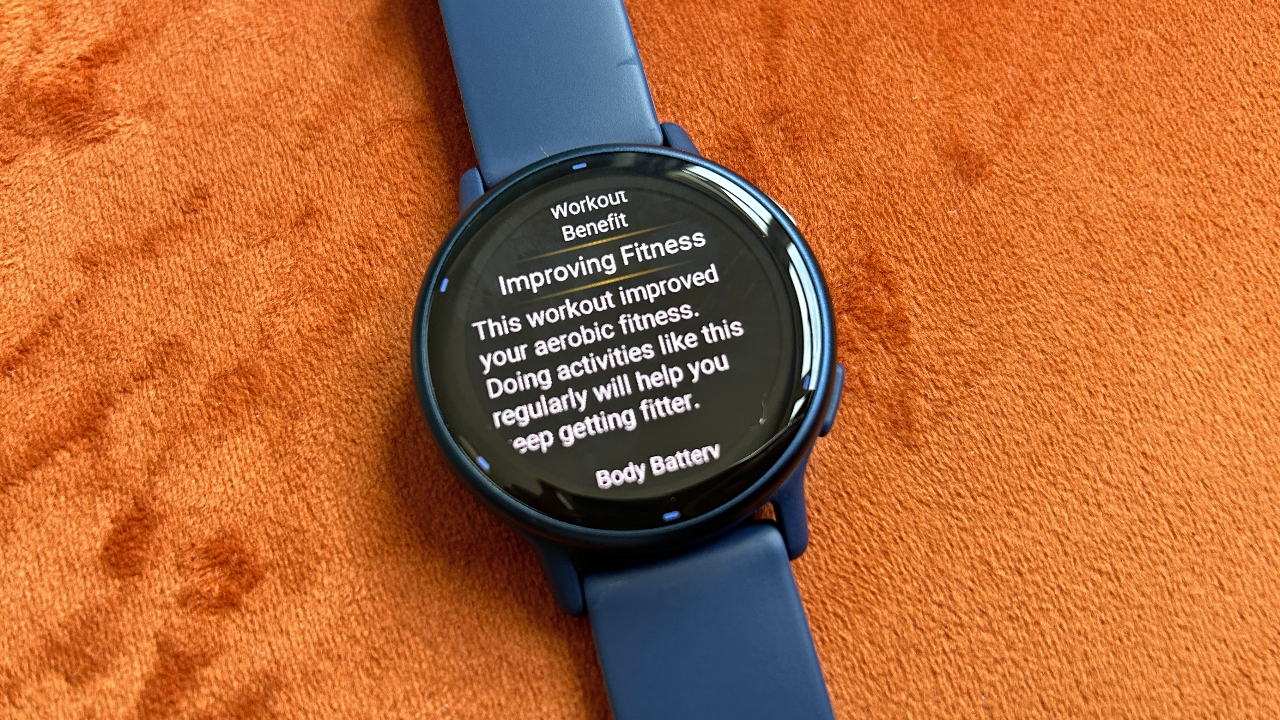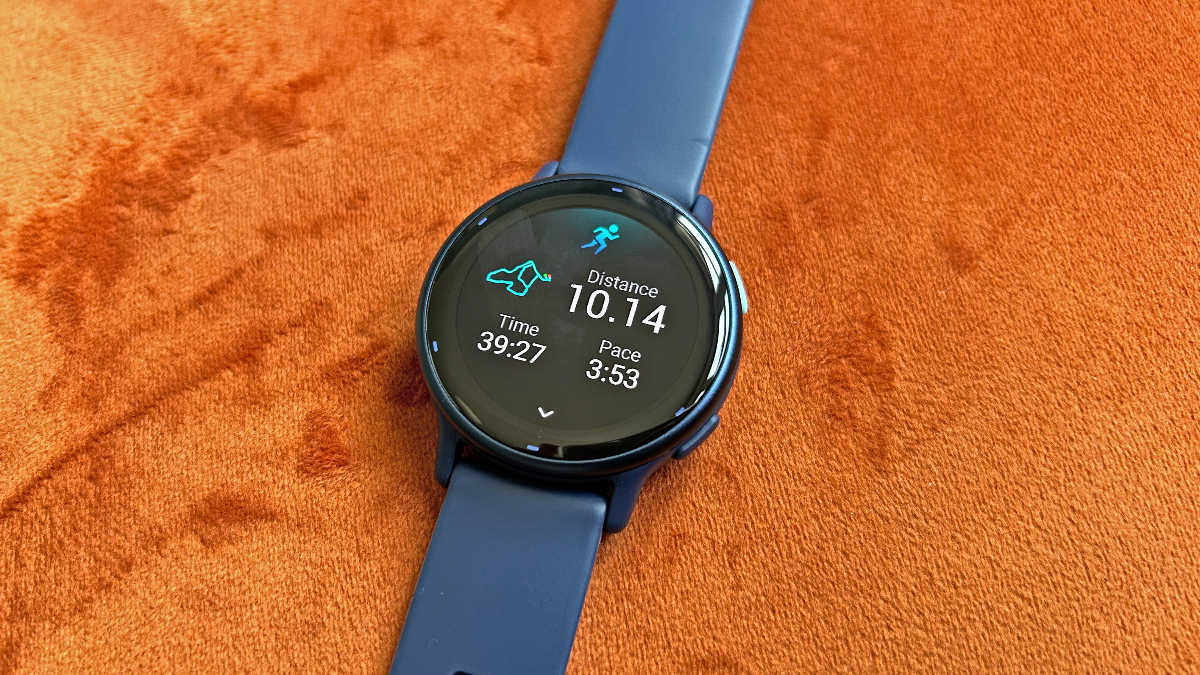Our Verdict
For its price, the Garmin Vivoactive 5 is an impressively capable watch, offering useful smarts and an attractive AMOLED screen alongside Garmin’s reliable sports and fitness tracking. It does lack features found on more expensive options but offers solid value as a cheaper alternative to the Garmin Venu 3 or Apple Watch Series 9.
For
- Attractive design and AMOLED screen
- Good sports tracking
- Music storage
Against
- No barometric altimeter
- HR accuracy is hit and miss
- No mic and speaker
You can trust Coach
The Garmin Vivoactive 5 stands out as one of the best fitness smartwatches thanks to its attractive design and reliable sports tracking. It’s a cheaper alternative to the Garmin Venu 3, which offers most of the same key features, including a bright AMOLED display.
There are reasons to upgrade to the Venu 3, or indeed the Apple Watch Series 9, if you’re looking for a true smartwatch with great sports tracking. Garmin also has the Venu Sq 2 Music, which is often available for less than the Vivoactive 5’s RRP, and the Forerunner 255 for those who’d like something more sports-focused.
Garmin Vivoactive 5: Price And Availability
The Garmin Vivoactive 5 launched in September 2023 and costs $299 in the US and £259.99 in the UK. That’s considerably cheaper than the Venu 3, which is $449.99/£459.99, and similar to the Garmin Venu Sq 2 Music smartwatch, which has an RRP of $299.99/£269.99, though it is now often found in sales.
How I Tested This Watch

I’ve used the Garmin Vivoactive for two weeks, tracking all my workouts, general activity and sleep with the watch in that time. I’ve run most days with the watch, as well as tracking bike rides, strength and yoga sessions. I’ve tested most of Garmin’s range of watches, as well as fitness smartwatches from a range of brands, including the latest Apple Watches.
Design
The most notable update to the Garmin Vivoactive 5 is that it now has an AMOLED display, rather than the color LCD screen used in the past. Previously, this was one of the major reasons to upgrade to the Venu over the Vivoactive, but the 1.2in AMOLED touchscreen on the Vivoactive 5 is bright and easy to see indoors and out.
The watch now comes in just one size, which has a 42mm case that’s 11mm thick and sits snugly against the wrist. The Vivoactive 4 came in two sizes—40mm and 45mm—as does the Garmin Venu 3 (41mm and 45mm). It weighs 36g with the silicone band and is a lightweight and comfortable watch to wear 24/7.
The Vivoactive 5 has an aluminum bezel, but otherwise is made from plastic. It has two buttons on the right side of the watch and comes in four colors—black, purple, blue and ivory—and ships with a 20mm silicone band. While the Garmin Venu 3 has the brand’s latest and greatest optical heart rate sensor, the Elevate V5, the Vivoactive 5 has the Elevate V4. The V5 provided an upgrade in accuracy when I tested the Epix Pro and Fenix 7 Pro watches that also have it.
Sign up for workout ideas, training advice, reviews of the latest gear and more.
The Vivoactive 5 also lacks a barometric altimeter, which is not only available on the Venu 3, but was on the Vivoactive 4, so there’s a small downgrade from the older model there. You still get elevation stats during outdoor activities through GPS, but these are less accurate, and the watch also won’t track floors climbed throughout the day.

A less surprising omission is multi-band GPS tracking. The Vivoactive 5 GPS chipset offers only all-system-on and GPS-only modes, which are less accurate than multi-band, but not by much, in my experience. And given that this is a less sports-focused watch than others in Garmin’s range, and multi-band GPS uses more battery, I can see why it has been left off.
The Vivoactive 5 has a 5ATM water-resistance rating and 4GB of storage, which you can use for music or to add apps and watch faces from the Garmin Connect IQ app store. It has a pulse oximeter to measure blood oxygen saturation either continuously or just for spot checks, which is less battery-intensive.
Sports Tracking And Accuracy
The Garmin Vivoactive 5 is not billed as a sports watch like the Forerunner range, though in practice there are more similarities across Garmin’s devices than differences. The sports tracking is always reliable, with customisable sports modes that show all the key stats you need during your workouts.
I found the Vivoactive 5 to be accurate during my testing, for the most part. The GPS tracking largely matched up well to that of the Garmin Epix Pro in multi-band mode. There were errors on the Vivoactive 5’s tracks, especially when I ran under tree cover in a forest, but the overall distance and pacing stats were close to the Epix Pro.
The Vivoactive 5 was somewhat inaccurate on distance during a track session though, since it doesn’t have Garmin’s Track Run mode, which remains reserved for the brand’s more sports-focused watches.

I saw more errors with the optical heart rate tracking from the watch, which lagged behind the readings from a chest strap during intervals, and was wrong for the entirety of one run where it seemed to lock on to my cadence rather than my heart rate. You can connect external sensors via Bluetooth and ANT+ if you want to use a chest strap. This connectivity is a standard feature on Garmins but not always offered by smartwatches.
The training analysis on the Vivoactive 5 is less comprehensive than on the Forerunner range, though you get an estimated recovery time after workouts and a short paragraph explaining the training benefits of workouts, such as improving your VO2 max or general aerobic fitness. You won’t get insights into your overall training load or daily suggested workouts though.

Activity And Sleep Tracking
Aside from not having floors climbed, the Vivoactive 5 is a comprehensive everyday activity tracker, logging steps, active minutes and calories burned. It has Garmin’s Body Battery feature, which estimates your energy levels and shows how sleep and workouts affect them, and tracks your heart rate variability overnight. Once it has set a heart rate variability (HRV) baseline for you, deviations from the norm can indicate that your body is unduly stressed or that you’re getting ill.
During testing the sleep tracking was not particularly accurate, which coincided with a period where my five-month-old baby decided he wasn’t all that keen on sleep. I’ve had many nights with lots of time spent awake, which the Vivoactive 5 has logged as light sleep, much to my chagrin.
Naps are also tracked with the Vivoactive 5, not that I’ve had any while wearing it, unfortunately. It also has a sleep coach feature that suggests how much sleep you need each night based on activity levels, HRV and recent sleep. It’s a nice idea but undermined by inaccurate sleep tracking.
Smart Features
Now it has an AMOLED screen, the Vivoactive 5 has basically all the smartwatch-style features Garmin offers in general, aside from navigation. It has NFC payments through Garmin Pay, music storage and the ability to link with Spotify, Deezer and Amazon Music premium accounts for wireless transfers, and access to the Connect IQ app store. However, the app store falls well short of the range you get from Apple or Google Play. There’s no LTE version of the Vivoactive, so it’s not a true smartwatch, though it has useful smarts and is a great sports watch that works with Apple and Android devices.
Battery Life
The Garmin Vivoactive 5 is listed as lasting 11 days in smartwatch mode, which drops to five days with the screen always on. It offers 17 hours of GPS tracking when in all-systems-on mode, and 21 hours if you opt for GPS-only.
In my testing, I found it lasted a week with the screen set to raise-to-wake, and four days with the screen always-on. That’s when running every day with all-systems-on mode activated, and with notifications coming into the watch. Sportier Garmins with LCD screens can last longer, but for a fitness smartwatch with an AMOLED screen the battery life on the Vivoactive 5 is good, though it’s not as long as the larger Venu 3 model.
Is The Garmin Vivoactive 5 Worth It?
The Garmin Vivoactive 5 is a great watch, and worth the price—it looks a great-value option in comparison with the Venu 3 and the Apple Watch Series 9. It offers attractive design, good sports tracking and handy smart features, and it’s a considerably better sports watch than any Android smartwatch I’ve tested.
Buying decisions become less clear when you add in all the other Garmin watches around it, however—Garmin could do with simplifying its range. The Garmin Venu Sq 2 Music in particular is similar in price, with a smaller square design and most of the same features as the Vivoactive 5, and it’s now often in sales for less than its RRP.
On the sportier side of things there is the Garmin Forerunner 255, which doesn’t have an AMOLED display, but does have a barometric altimeter and multi-band GPS tracking, plus more insightful training analysis. It’s the better option for those more focused on sports like running over tracking general activity and gym workouts.

Nick Harris-Fry is a journalist who has been covering health and fitness since 2015. Nick is an avid runner, covering 70-110km a week, which gives him ample opportunity to test a wide range of running shoes and running gear. He is also the chief tester for fitness trackers and running watches, treadmills and exercise bikes, and workout headphones.

